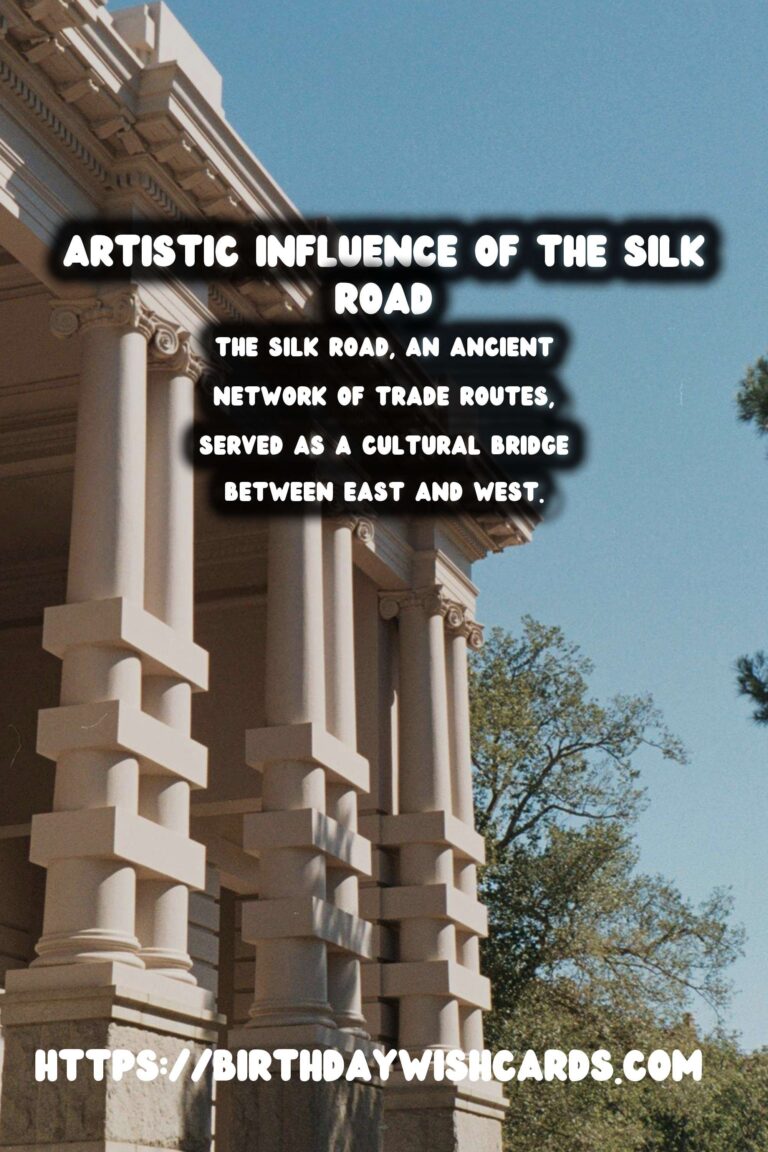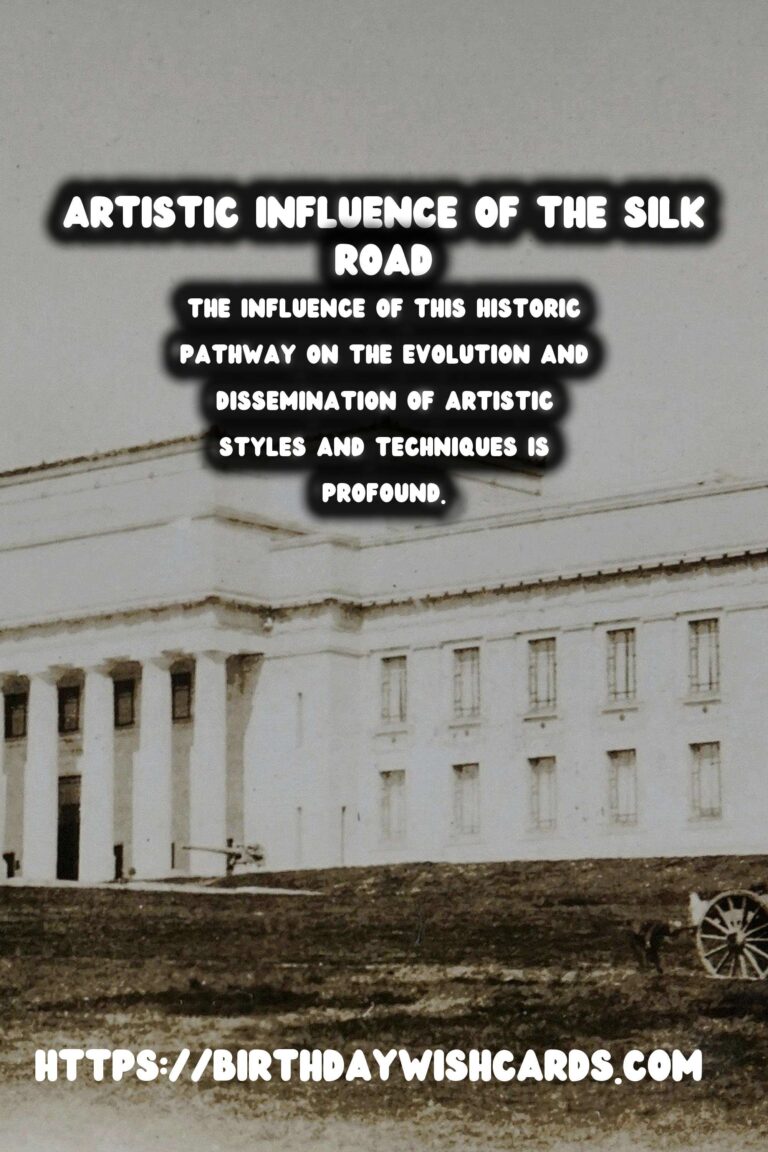
The Silk Road, an ancient network of trade routes, served as a cultural bridge between East and West from approximately the 2nd century BCE until the 14th century. This vast expanse facilitated not only the exchange of goods such as silk, spices, and precious metals but also the exchange of ideas, customs, and art.
The influence of this historic pathway on the evolution and dissemination of artistic styles and techniques is profound. By examining various artifacts, we can better understand how the Silk Road served as a conduit for artistic innovation.
An Interconnection of Cultures
The Silk Road functioned as a major east-west connector, influencing various aspects of art across continents. Merchants, scholars, and artists traveled through the Silk Road, bringing with them their unique cultural perspectives, motifs, and artistic traditions.
One notable impact was the introduction of Buddhism to China from India, which spurred a blending of religious art forms and ushered in significant architectural and artistic developments such as the rock-cut cave temples at Dunhuang.
Artistic Exchange and Adaptation
Travelers along the Silk Road brought textiles, ceramics, and other art objects to new regions, allowing for the assimilation and adaptation of different artistic elements. Persian and Roman influences can be seen in silk designs, while Chinese porcelain benefited from techniques introduced through these interactions.
Similarly, the rich iconography of Persian miniatures and Byzantine mosaics would have mirrored various styles appreciated along the trade routes, demonstrating the bidirectional nature of artistic exchange.
The Role of Craftspeople and Artisans
Artisans who worked along the Silk Road were instrumental in these artistic exchanges. They synthesized foreign techniques with local traditions, leading to the creation of unique art forms that enjoyed popularity in many regions. This included advancements in the practice of cloisonné enameling, intricate metalwork, and textile weaving.
Moreover, the demand for luxurious goods spurred greater knowledge and refinement of artistic techniques. The detailed murals and artifacts unearthed from sites like Turfan and Kashmir illustrate these complex cultural interchanges.
Challenges to Art Preservation and Interpretation
Despite its extensive influence, the understanding of the Silk Road’s impact on art is often limited by the challenges of archaeological preservation and political turmoil in some regions. However, existing findings continue to offer valuable insights into the artistic achievements facilitated by the interconnectivity of the Silk Road.
Organizations and researchers work tirelessly to preserve these historical treasures and unravel the story of the artistic legacies left in the wake of the expansive trade network.
Conclusion
While the Silk Road’s original purpose was commerce, its contributions to the arts have shaped cultural landscapes far beyond its ancient paths. The sustained cross-cultural exchanges that it allowed have demonstrated the power of art as a universal language, continually blending and evolving over centuries.
From influencing architectural advancements to inspiring decorative arts, the Silk Road remains a testament to the shared human inclination towards creativity and expression, which transcends geographical and temporal boundaries.
The Silk Road, an ancient network of trade routes, served as a cultural bridge between East and West. The influence of this historic pathway on the evolution and dissemination of artistic styles and techniques is profound.
#SilkRoadArt #CulturalExchange

